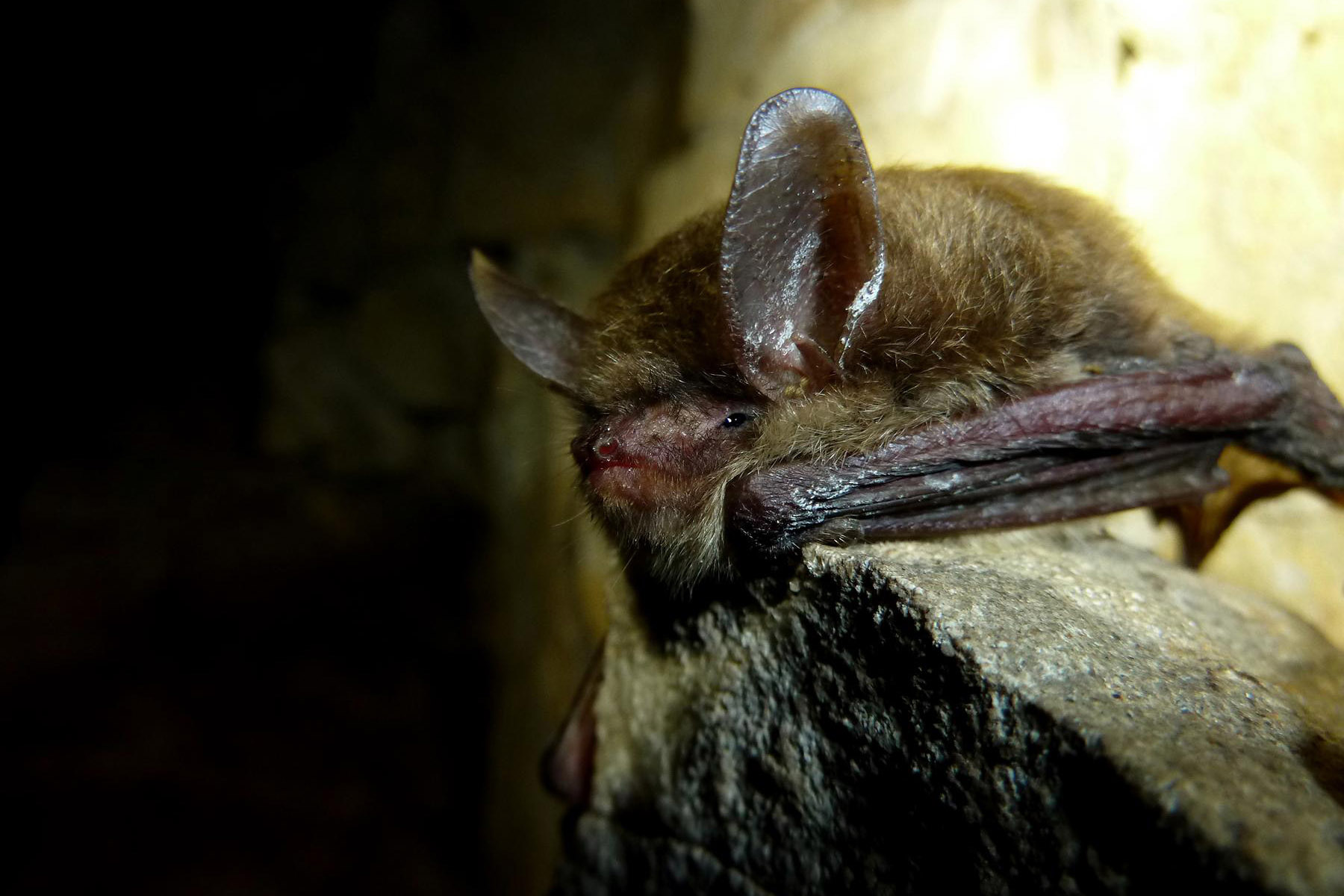Oil and Gas Development Could Pose a Risk to Struggling Pennsylvania Bats
A coalition of nine oil and gas companies is asking the U.S. Fish and Wildlife Service for a 50-year permit that would allow the killing or disturbing of five bat species in Pennsylvania, Ohio and West Virginia. The permit, which is covered under the Endangered Species Act, is called an incidental take permit because the impacts are incidental to carrying out a legal activity, like constructing pipelines.
The permit would include the endangered Indiana bat, threatened northern long-eared bat, as well as the eastern small-footed bat, little brown bat and tri-colored bat. All five of these bat species have been in sharp decline because of white-nose syndrome.
“The issuance of the permit cannot significantly depreciate the recovery of the species in the wild,” says Pamela Shellenberger, a biologist with the U.S. Fish and Wildlife Service’s Pennsylvania Field Office. Her agency will look at tree removal, places where bats create maternity colonies and hibernate, and noise and vibrations to make sure the permitted activities won’t hurt bat populations. Their environmental impact statement won’t be completed until late next year.
LISTEN: Your Environment Update for December 14, 2016
A statement released by EQT, one of the coalition members, says their habitat conservation plan for the permit will “minimize and mitigate any potential adverse impacts to the species.” At a public meeting hosted by the U.S. Fish and Wildlife Service in Washington County, consultants working on behalf of the coalition revealed the plan includes carving out areas where oil and gas activities covered under the permit would not occur, as well as a provision for white-nose syndrome research.
Pam Shellenberger says the benefit for companies is knowing the expectations ahead of time so they can better plan for the future. She says a longer-term approach also might help Fish and Wildlife strengthen conservation efforts for the bat species.
“Right now, it could be death by a thousand cuts where we’re looking at each project piece by piece,” Shellenberger says. She says this is one of the largest such permit requests in the Northeast—both in area size and length of time.
Jane Davenport, a senior staff attorney for the group Defenders of Wildlife, says though it’s early in the process and she hasn’t seen the draft habitat conservation plan, these bat species are already on the brink of extinction. For that reason, she thinks a 50-year timeframe isn’t justified for such a broad permit.
“It’s way too big a bite at the apple,” Davenport says.
She says we can’t afford to underestimate the impacts that ongoing habitat fragmentation from shale gas development—such as cutting down trees to build pipelines—could have on the survival and recovery of forest-dependent bats.
Public comments are being taken until December 27 on this initial phase of the permitting process.
Reporting by Kara Holsopple
Shell’s Ethane Cracker is Raising Hopes for an Economic Boom
Shell’s ethane cracker project in Beaver County is back in the news this week, with public hearings for various permits and activists voicing their concerns. But many are welcoming the plant, hoping it could usher in a new wave of economic development in the region.
Dan Adamski, managing director of Jones Lang LaSalle, the international real estate firm that helped Shell find the site, says it could be some time before we see the cracker’s impact ripple through the area economy.
“I think it will unfold more slowly than people anticipate,” Adamski says. “A lot of folks thought once the announcement was made, there was going to be a tidal wave of development. It’s going to be a rising tide, but we don’t think it’s going to be a tidal wave.”
Still, Adamski says Shell’s petrochemical plant, which will convert natural gas into the building blocks of plastic, is a good use for the many former industrial sites that line the Ohio River.
“This was a former Horsehead zinc plant. It’s a site that Shell is having to remediate for its own use,” Adamski says. “And it would have become a brownfield site had Shell not gone there. The river quality is very important. You’re selling the river, whether it’s an office building or residential, and often times, you’re paying a premium because it’s more expensive to develop along the river. No one wants to look out their window and see a dirty river.”
Reporting by Julie Grant

